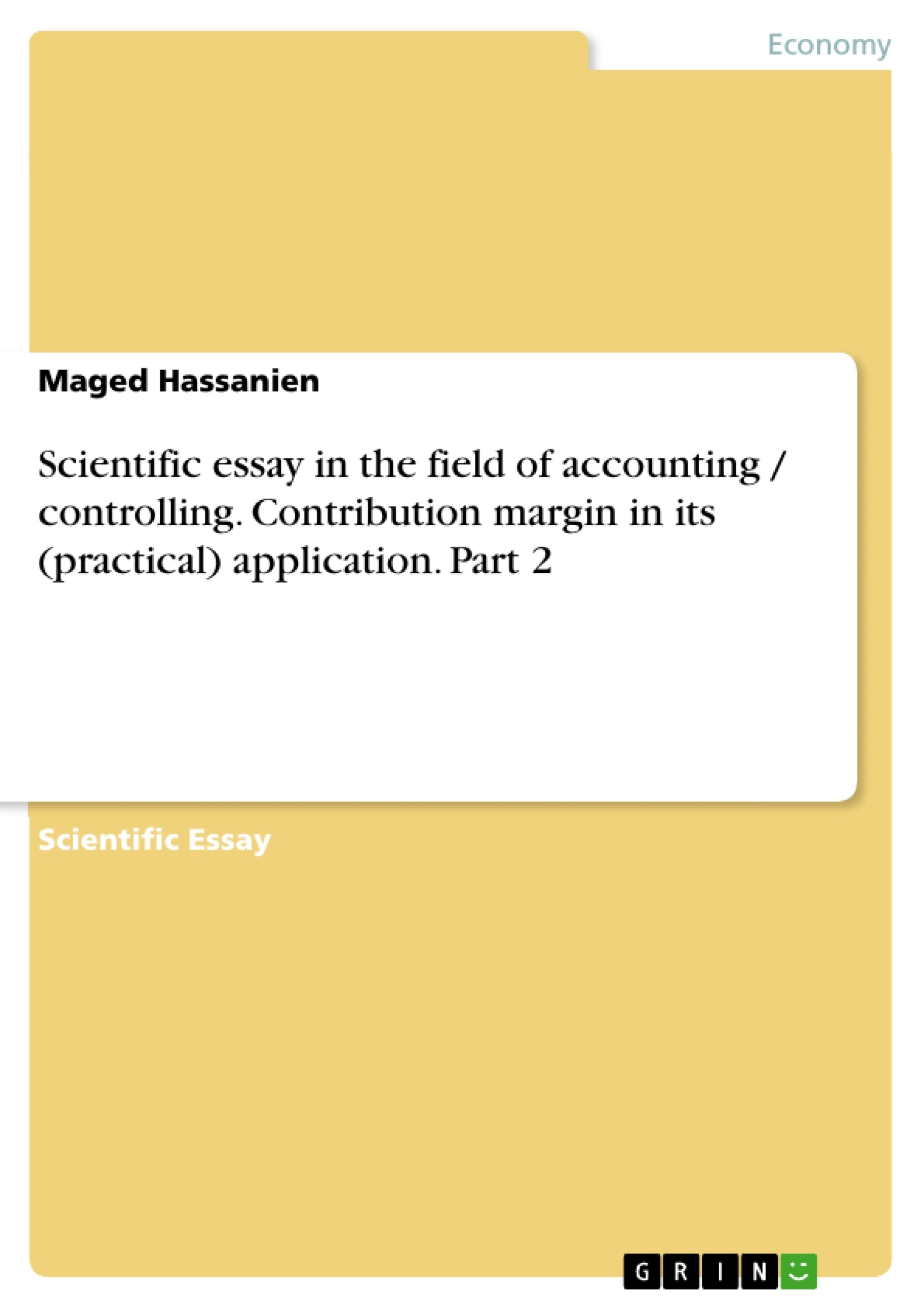Cost accounting systems on a partial cost basis include those cost accounting methods in which not all costs are allocated to the activity units. The renunciation of the allocation of the entire costs is the decisive characteristic of these cost accounting systems (Haberstock, 2008).
The partial cost accounting systems can be carried out on the basis of actual costs, normal costs or planned costs. The splitting of costs into fixed and variable parts plays a central role here. Furthermore, cost accounting (especially cost center accounting) must divide and present the splits of fixed and variable cost portions in a targeted manner (Haberstock, 2008).
Cost accounting systems based on full costs have two main shortcomings in particular:
- Proportionalisation of fixed costs
- Allocation, apportionment and distribution of overhead costs
Partial costing systems were developed to avoid, among other things, these disadvantages of cost accounting methods. In general, the following tasks can be attributed to the direct costing systems: (Haberstock, 2008).
- Improvement of the performance analysis
- Improvement of the success planning
- Improving marketing decisions
- Improving cost control
- Improving the breakdown of direct (variable) costs
- Improving the breakdown of business fixed costs
- Improvement of the price calculation
- Improving the determination of the price floor (Haberstock, 2008).
Inhaltsverzeichnis (Table of Contents)
- Introduction and basic presentation of direct costing.
- Applications of the contribution margin accounting.
- Single-level contribution margin accounting.
- Prerequisite and content of the single-level DB.
- Multi-level contribution margin accounting.
- Contribution margin accounting with relative direct costs.
- Practical cases of contribution margin accounting.
- Case 1: Carpentry business.
- Case 2: Kiosk.
- Conclusion and outlook.....
Zielsetzung und Themenschwerpunkte (Objectives and Key Themes)
This scientific essay in the field of accounting/controlling focuses on contribution margin accounting and its practical applications. It aims to highlight the benefits of this approach compared to traditional full cost accounting methods. The paper examines the advantages of contribution margin accounting, including improved performance analysis, success planning, marketing decisions, cost control, and price calculation.
- Contribution margin accounting as an alternative to full cost accounting.
- Different levels of contribution margin accounting: single-level, multi-level, and with relative direct costs.
- Practical applications and case studies demonstrating the benefits of contribution margin accounting.
- Advantages of contribution margin accounting for decision-making and performance evaluation.
- Key concepts and terminology in contribution margin accounting.
Zusammenfassung der Kapitel (Chapter Summaries)
The introduction provides an overview of cost accounting systems based on a partial cost basis, highlighting the shortcomings of full cost accounting and introducing the concept of contribution margin accounting. Chapter 2 delves into the applications of contribution margin accounting, covering both single-level and multi-level approaches. It also explores the concept of contribution margin accounting with relative direct costs. Chapter 3 presents practical cases of contribution margin accounting in a carpentry business and a kiosk, demonstrating its application in real-world scenarios.
Schlüsselwörter (Keywords)
Contribution margin accounting, partial cost accounting, full cost accounting, single-level contribution margin, multi-level contribution margin, relative direct costs, cost control, decision-making, performance analysis, price calculation, practical applications, case studies.
- Citar trabajo
- Dipl.-Betriebs- und Verwaltungswirt und PhD Maged Hassanien (Autor), 2021, Scientific essay in the field of accounting / controlling. Contribution margin in its (practical) application. Part 2, Múnich, GRIN Verlag, https://www.grin.com/document/1150521



